#funen denmark
Photo

Egeskov Castle, Kværndrup, island of Funen, Denmark,
Emma Bernhoff Photography
#watercastle#architecture#castle#denmark#egeskov castle#funen#emma bernhoff#luxuryhouses#luxuryhomes#luxurylifestyle#style#history#renaissance
547 notes
·
View notes
Text

Egeskov castle. Fyn, Denmark.
#egeskov castle#fyn#funen#denmark#egeskov slot#the southern isles#frozen fever#frozen#frozen disney#hans#prince hans#hans frozen#who is this hans?#my theories#the 13th is out
22 notes
·
View notes
Photo

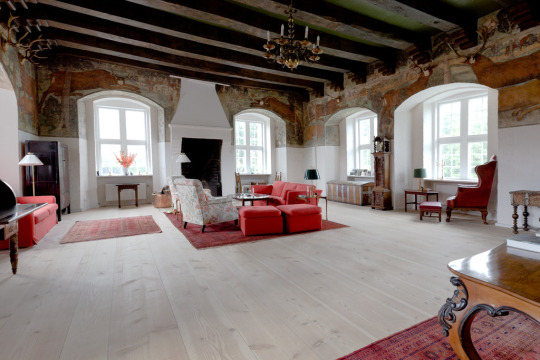
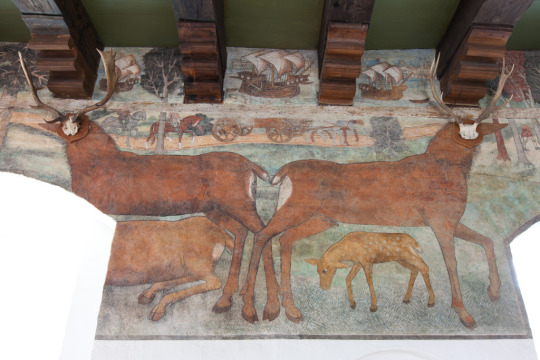
The Deer Room c. 1550
Hesselagergård / Hesselager Manor, Funen, Denmark
#hesselagergård#hesselagergaard#funen#denmark#interiors#interior design#architecture#16th century#deer#*
184 notes
·
View notes
Text

Old house in Odense, Funen, Denmark
Danish vintage postcard
#historic#photo#briefkaart#vintage#danish#sepia#photography#carte postale#postcard#postkarte#postal#tarjeta#ansichtskarte#old#funen#house#ephemera#postkaart#denmark#odense
7 notes
·
View notes
Text
Arthur Lee And Love - Live In Denmark 1996 - Past Daily Morning Soundbooth
Arthur Lee – the world was a whole lot better off with him in it.
https://pastdaily.com/wp-content/uploads/2013/01/arthur-lee-love-live-1996.mp3
We could use the support: Become a Patron!
Kicking off the week on a high note. One of my absolute favorites tonight. Sadly, not a complete concert, but enough to give you an idea of how Arthur Lee’s revival was coming along in 1996.
One of the great…
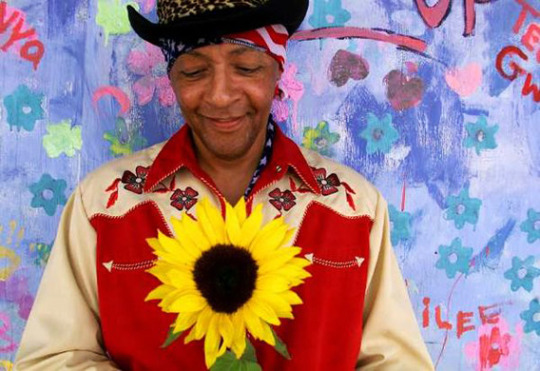
View On WordPress
#1960&039;s#1990s#Alternative Rock#Arthur Lee#Arthur Lee & Love#Baby Lemonade#broadcast concert#Broadcasts#Christmas#Christmas Music#Copenhagen#Counties#Danish Radio#Denmark#Funen#History#Independent rock#Legend#Live Concert#Mini-Concert#Nights At The Roundtable#Odense#Past Daily#Pop Music#Popular Culture#Psychedelia
3 notes
·
View notes
Text


Funen, Denmark
Jacques Bopp
0 notes
Text
A Paradise for Chamber Music Festivals
A Paradise for Chamber Music Festivals

View On WordPress
0 notes
Text
getting confused buying danish cheese and coming back with south african shrubland
1 note
·
View note
Text
Here’s a bit of fun folklore.
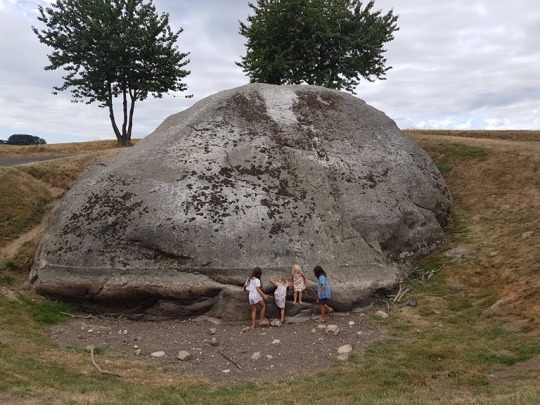


The largest rock in Denmark is nothing much to look at if you come from an area with mountains but Denmark is mainly made of sand and dirt that was pushed down from Sweden and Norway during the ice age and they gifted us a few big rocks in the process.
The biggest rock came to rest on Funen and became the focus of much lore. People couldn’t figure out how such a huge rock ended up in the middle of a field and eventually named it Damestenen which means The Lady’s Rock (or very directly and literally translated to LadyStone)
It was named so because people believed it had been thrown by a woman. Sometimes a human woman, sometimes a magical witch and sometimes a troll woman, but either way she supposedly got angry at Svindinge Church and threw the rock at it but missed.
It’s not uncommon to explain large or weird rocks near churches as someone wanting to destroy it. Roskilde Church where all the Danish royals are buried has this stone nearby
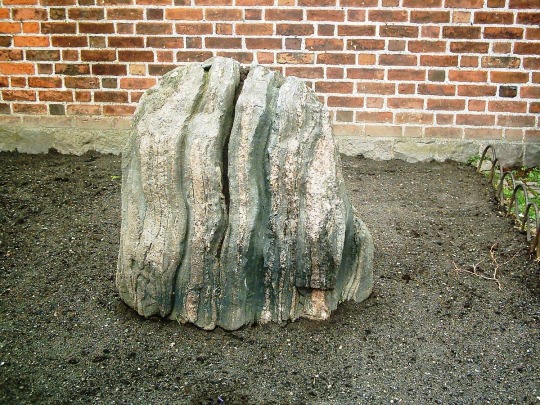
It’s said to look like that because the devil or a troll threw it and his fingers dug into the stone.
But The Lady’s Rock is the only one believed to have been thrown by a woman which is pretty fun.
2K notes
·
View notes
Text

The Funen Bractaete, a gold medallion featuring the god Odin, uncovered near Funen, Denmark, dated to 5th century AD. Currently housed at the National Museum of Denmark
804 notes
·
View notes
Text








📷 Det Danske Kongehus
🇩🇰 Crown Prince Frederik of Denmark
Sunday, April 2, 2023
“Palm Sunday has been particularly festive in Odense today. In addition to the fact that it is the birthday of the city child H.C. Andersen, Mads Davidsen was installed into his new office this afternoon as bishop of the Diocese of Funen.
The diocesan ordination, which took place in Odense Cathedral, was witnessed by His Royal Highness the Crown Prince.
According to tradition, the ecclesiastes, which has roots back to the first ecclesiastical constitution immediately after the Reformation, began with a procession of the bishops of the country and the North. Here Mads Davidsen walked at the back, wearing a white fair shirt on the outside of the priest's dress. When the new bishop left the cathedral two hours later, he was now leading, and here was Mads Davidsen wearing the diocese's 120-year-old bishop's robe.”
22 notes
·
View notes
Text
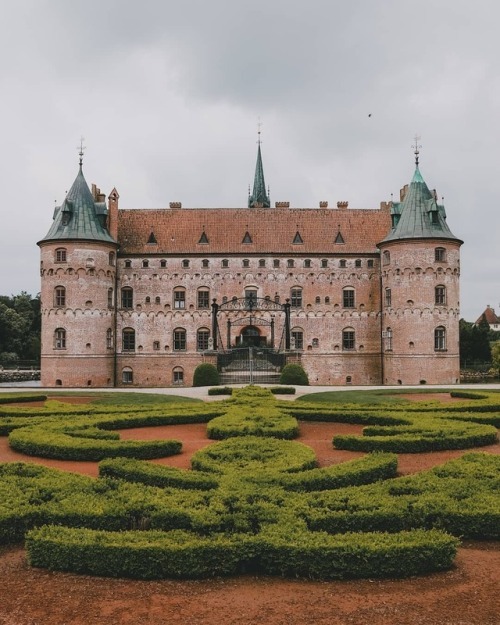
Egeskov Castle is the best preserved Renaissance water tower in Europe and is located in the south of the island of Funen in Denmark
3 notes
·
View notes
Text

Hans Christian Andersen's statue in Odense, Funen, Denmark
Danish vintage postcard, mailed in 1910 to Boulogne-sur-Seine, France
#christian#postkaart#statue#boulogne#carte postale#hans christian andersen's#briefkaart#seine#old#sepia#france#postkarte#vintage#postal#photography#denmark#funen#andersen#sur#mailed#ephemera#odense#postcard#danish#tarjeta#1910#photo#ansichtskarte#hans#historic
3 notes
·
View notes
Text
This is an overhaul of an old post from 5 years ago, because I've added a bunch of stuff which unfortunately does not show up correctly anywhere but ON my blog.
Denmark, Scandinavia, and the Nordic region in Danish
Areas
The Nordic countries - De nordiske lande · Norden
Scandinavia - Skandinavien
Kingdom of Denmark · Danish Realm - Kongeriget Danmark · Danmarks Rige
The Kalmar Union · Union of Kalmaris - Kalmarunionen (1397 to 1523)
Countries
Denmark - Danmark
Sweden - Sverige
Norway - Norge
Finland - Finland
Greenland - Grønland · Kalaallit Nunaat (Greenlandic, lit. “Greenlanders’ land")
The Faroe Islands - Færøerne · Føroyar (Faroese)
Iceland - Island
Languages
Danish - dansk
Swedish - svensk
Norwegian - norsk · nynorsk · norsk bokmål
Finnish - finsk
(West) Greenlandic - (vest)grønlandsk · kalaallisut
Faroese - færøsk · føroyskt
Icelandic - islandsk
Minority languages
German - tysk (spoken by the German minority in North Schleswig/South Jutland)
Sámi - samisk (spoken by the Sámi people in large parts of northern Finland, Norway, and Sweden; the cultural region of Sápmi)¹
Inuktun · Polar Inuit - nordgrønlandsk · avanersuarmiutut (spoken in Northern Greenland, around Qaanaaq)²
East Greenlandic - østgrønlandsk · tunumiisut (spoken in Eastern Greenland/Tunu)²
Romani - romani (spoken by the Romani people)
Kven - kvensk (spoken by the Kven people in northern Norway)³
Sign Language - tegnsprog⁴
National demonyms⁵
Dane - dansker
Swede - svensker
Norwegian - nordmand (lit. “northern man”)
Finn - finne · finlænder (rare)
Greenlander - grønlænder · kalaaleq
Faroese · Faroe islander - færing · føroyingur
Icelander - islænding
German - tysker
Non-national ethnicities
Romani - romani
Sámi - same
Specifically Danish stuff
Places in Denmark⁶
Copenhagen - København
Aarhus - Aarhus · Århus (unofficial, but not incorrect spelling)
Jutland - Jylland · Hovedlandet (slang)
Funen - Fyn
Zealand - Sjælland · Djævleøen (slang, lit. “The Devil’s Island”)
Major dialects/regiolects based on location
Jutland - jysk
Zealand - sjællandsk
Funen - fynsk
Bornholm - bornholmsk
All islands (including Zealand + Funen, excluding Bornholm) - ømål (lit. “island language”)
Smaller areas that used to be Denmark
Schleswig-Holstein - Slesvig-Holsten⁷
Scania (Skånes län) - Skåne (around 970 to 1658)
Halland (Hallands län) - Halland (around 970 to 1645, legally 1658)
Blekinge (Blekinge län) - Blekinge (around 970 to 1658)
The Virgin Islands of the United States - Jomfruøerne · Dansk-Vestindien (outdated) · De Vestindiske Øer (outdated) (1672 to 1917)
Estonia - Estland (Hertugdømmet Estland 1206 to 1346, Øsel 1560 to 1645)⁸
Notes:
1) There are many Sámi languages and dialects, too many to list here.
2) Some argue that East and West Greenlandic are dialects of the same language and that North Greenlandic (Inuktun) is a dialect of Inuktitut.
3) Some do not recognise Kven as a separate language from Finnish.
4) Obviously, there is not 1 (one) Sign Language in the entire Nordic. There are Danish, Norwegian, and Icelandic Sign (which are all related), and Swedish and Finnish Sign (which are related to each other). Danish Sign is also used in Greenland and the Faroe Islands.
5) All nationalities and ethnicities fælleskøn (utrum)/common gender (uter).
6) These are just the major parts that you probably should know
7) The whole Schleswig-Holstein area has been much disputed and is hard to date. It was definitely NOT part of Denmark 1864-1920.
8) All of Estonia was never Danish, but various parts were.
If I screwed up or you have questions, feel free to shoot me a message!
#denmark#scandinavia#the nordic region#nordic countries#danish#langblr#language#dansk#danish vocabulary#original#in case you were wondering what was added#the answer is a BUNCH of minority languages#MORE notes#and numbers to the notes for your convenience
12 notes
·
View notes
Text

Apparently "hoop snakes" are a thing in Danish and Skånsk folklore????? This book is from the late 1800s so it's not impossible for it to have been influenced by North American fearsome critters, but it is highly unlikely. It also doesn't seem likely that the hoop snake stems from huggenagen, since Denmark and Skåne didn't have that many migrants to the US, though, again, it's not impossible. It seems most likely these creatures just appeared separately. The text reads:
"In Northern Funen, the adder is called "huggenagen." As the adder doesn't exist in this area, folks hold rather fanciful ideas about it. It is said that huggenagen can run faster than a horse, for it takes its tail into its mouth and runs like a wheel along the road. This folklore has been further expanded upon in Skåne. Here grass snakes - it is said - often lay in the middle of the road with intentions of, should someone drive by, jumping through all four wagon wheels. Should it succeed, the grass snake will become a "wheel snake," meaning it can bite its own tail and roll along like a wheel, and then no human will be able to outrun/flee from it."
The book is "Æventyrets Dyreverden" (1887) by Ingvor Bondesen.
Huggenagen is pronounced like HO-ge-NA-yen, with a hard G, like in gift, and an A like in apple.
#folklore#danish folklore#there's also a snake that sounds like a mix between the tatzelwurm and tsuchinoko
38 notes
·
View notes
Photo


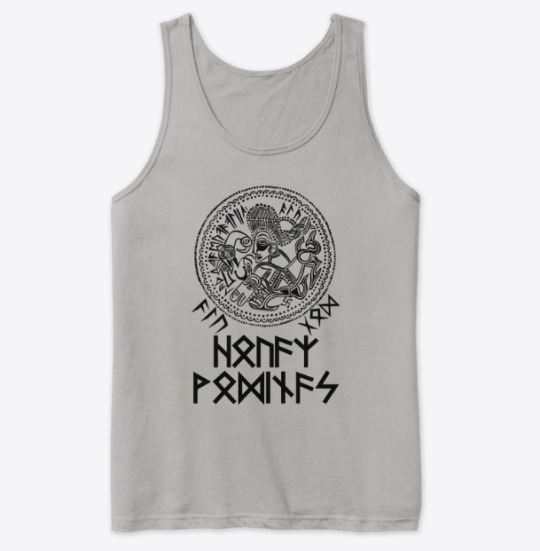
Gold Germanic bracteates often feature an image of the god Odin along side the ALU runic inscription. This range features a design from DR BR42 bracteate from the island of Funen, Denmark. The runes invoke "houaz" which is Odin as the "High" and there is also the ALU magical inscription. The runes beneath the design invoke him again: "ALU GOD / HOUAZ / WODINAZ" all of which are attested runic invocations of Odin.
BUY YOURS HERE
12 notes
·
View notes